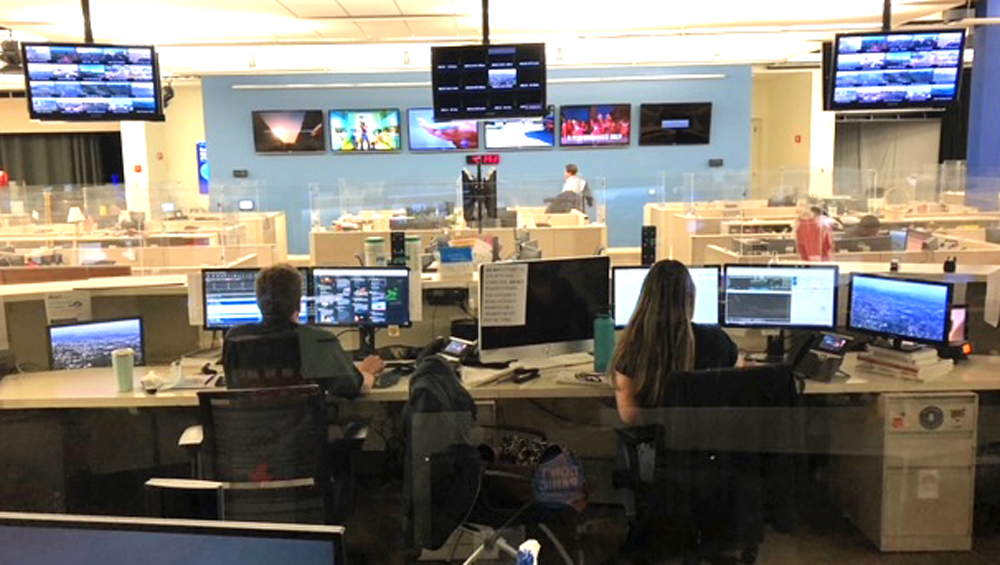
The Assignment Editor 2.0: More Collaboration, Newer Tools

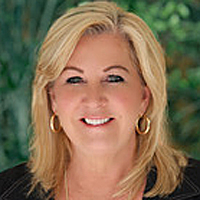
Cater Lee
Back in the late 1990s and early ’00s, when Cater Lee was a reporter for the likes of KNBC and KCAL in Los Angeles, the assignment desk was centrally located in the newsroom. Its editor likely spent extensive time across their day scrolling through police scanners, reading press releases and fielding tipster calls to identify news stories. From it emerged a dictation of Lee’s day.
“My story was already decided for me before I walked into the door,” says Lee, who’s now VP of news and content at Spectrum News 1 in Southern California and Texas.
Purveyors of the newsroom’s assignment desk today, however, are typically less head coach and more quarterback, fronting colorful offenses filled with audibles, option plays and other collaborative trickery that’s designed to always push the ball forward. In other words, story dispersal in a newsroom has increasingly become a team effort, with reporters and producers having more of a say in what makes it to broadcast. Digital technology has also chipped away at the relevance of many dinosaur-era tools assignment editors used to rely on so heavily.
But as the job changes, assignment editors remain a dedicated folk, dug into the frontlines of journalism’s war with mis- and disinformation, while doing their best to help generate broadcasts with wider-reaching community impact. Always, they’re relegated to behind-the-scenes grunt work, and rarely do they get their due.
“Assignment editors are absolutely underappreciated in their role in a newsroom,” says Julie Wolfe, news director at Tegna’s NBC affiliate KING Seattle. “The biggest way to tell the difference is when you work in a newsroom that has a poor assignment desk and then you work in a newsroom with a strong assignment desk.”
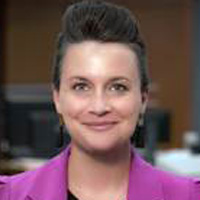
Julie Wolfe
The capable assignment editor, she observes, will “know all the information”: facts to support a package’s viability, sources that a reporter can contact to round it out, and whether a story is worth any airtime to begin with.
A presence like that in a newsroom matches the significance of an engine in a car, as one assignment editor puts it. Wolfe says assignment editors are like “orchestral conductors,” while additional metaphors that float through interviews stem from human biology. One editor calls the assignment desk the newsroom’s brain; others liken the role’s import to that of the heart or central nervous system, for it’s the assignment editor who pumps data to the farthest reaches of the newsroom, which of course now stretches well beyond the walls of an office building.
Social’s Key Role
Along with an innate sense of what makes for a quality newscast, to effectively manage the assignment desk, editors need top-flight organizational and communication skills, just as they have for decades. These days, familiarity with the social media universe is of equal consequence.
While his team of 10 assignment editors won’t be getting rid of their police scanners anytime soon, Gonzo Rojas, assignment manager at NBC-owned KNTV and Telemundo 48 (KSTS) in the San Francisco Bay Area, marvels at Twitter’s near-supplanting of relatively old-timey technology.
“Twitter’s huge,” he says. “When it comes to breaking news, often we’ll see it on Twitter now before we hear it on police scanners, which is just incredible.”
Darren Whitehead, digital desk lead at another Tegna NBC affiliate, KUSA Denver, says Colorado police scanners are encrypted, but monitoring Twitter helps him pick up the slack.
“Most of the ways that the police departments and fire departments are communicating with us is they’re putting out [updates] on social media, and usually it’s not immediate, it’s well after something has happened,” Whitehead says. “We get calls from people in the community being, like, ‘What the hell is going on down the block from me?’ Then we have to call [the responsible agency], and then they tweet out to everyone — without calling us back — all the information.”
Assignment editors set up Tweet Deck channels, or Social News Desk dashboards, where they follow various government agencies, other news sources like the Associated Press and additional relevant accounts where prospective stories may pop up. Dataminr alerts help inform assignment editors, too; neighborhood-focused Reddit forums and community-based apps like Nextdoor can sometimes supply story ideas as well.
Then, there are community-related Facebook groups, which one assignment editor says she joins using a public profile associated with their news team position. Another longtime story assigner says she taps younger newsroom colleagues to examine Instagram, Snapchat and other social media platforms they might be more comfortable navigating through.
Scrutiny’s Imperative
Like in the past with press releases — though assignment editors still lift stories from those on occasion — they can’t take what’s written online at face value. The same can be said for what citizen tipsters tell the assignment editor over the phone or in emails, as well as what public information officers say.
“People ask me what the hell I do, and I always tell them, ‘Well, the assignment desk is usually ‘first response,’” Whitehead says. “You gotta sift through the bullshit.”
While they may have always prioritized backing up facts, with sources, data and other means, assignment editors in 2022 say there is an added emphasis on getting story facts unquestionably correct.
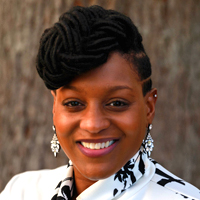
Jamila Elder
“There are some stations that report solely off of what they hear on the scanners. We are not that station,” says Jamila Elder, assignment editor at WRAL, Capitol Broadcasting’s NBC affiliate in Raleigh, N.C. “You dig deep, you reach out to your contacts and you wait until you get [your information] confirmed, even though your competition station may be reporting it. As an assignment editor that’s very frustrating because we’re very competitive; you want to get the information and you want to get it first, [but] we would rather wait and get it right, than to report it first and get it wrong.”
Experience Matters
In many cases, as one assignment editor puts it, newsies “fall into” their positions at the assignment desk. The experience they bring with them, often as a reporter or anchor, serves them well in the role.
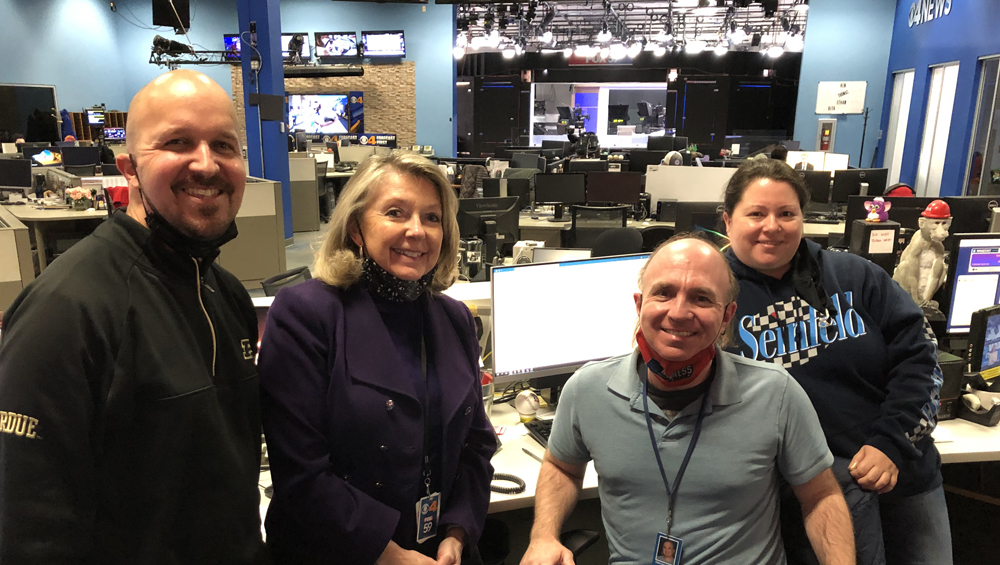
WXIN-WTTV Indianapolis assignment desk personnel (l-r): Adam Bartels, Ruthanne Gordon, Tim O’Brien and Sabrina Adams. (Greg Wilkerson photo)
Prior to Ruthanne Gordon becoming senior planning manager for Nexstar’s WXIN (Fox)-WTTV (CBS) Indianapolis, she was an assignment editor for 33 years. Before that, she was a reporter and anchor for more than five years, bringing with her to the assignment desk an assortment of connections from her front-of-the-camera days that she continues to call upon. Her phone book has only ballooned bigger throughout her 45 years in news.
“I have quite a Rolodex,” Gordon says, “I think that’s what they wanted when I came to this position as senior planning manager.” Cops she first met doing stand-ups, she says, “are now the commanders here in town, so I’ve kept those cell numbers, and that’s where I have an advantage.”
Working as a journalist before manning the assignment desk also helps cultivate that vital instinct of what makes for a compelling newscast. However, the assignment desk is also a prime location for industry newbies to break in and learn — a lot — on the fly.
“You gotta pay your dues by working the weekends,” Elder says. “That was where I learned the most because you don’t have a lot of managers, so you have to make those on-the-spot decisions. So, I was able to make those mistakes on that weekend shift, but I was also able to learn from those mistakes and learn how to make good news decisions.”
“This is a great way of starting and learning,” Gordon says of the assignment desk gig. Calling it a way to “fast-track” those new to the industry, she adds: “You can jump off of this and go produce a show [or] jump in a truck and go do an interview.”
Kendra Gilbert, senior assignment editor at KING, had no experience in a TV newsroom before hopping into the assignment desk chair at a station in her home market of Fresno, Calif. Fresh out of college, she struggled to find work in print journalism, her focus of study in school. But that degree still meant she could sniff out a good story and, combining that sense with strong organizational and communication skills, she was confident she could fill the seat just fine.

Kendra Gilbert
She’s held an assignment editor position at one West Coast station or another for nine years running. She says to excel in the role one has to be comfortable working in “a fast-paced environment,” and have the ability to “turn on a dime” and “focus on one thing and switch to another.”
Collaboration Grows
Elder statesman Gordon says of the assignment editor job demands: “It keeps me young.” Both she and the more youthful Gilbert say the position has also become more collaborative in recent years.
“We do sort of have that gatekeeper role,” Gilbert says. Still, she continues, “there’s always this two-way exchange of information between the desk and the reporters.”
Assignment editors consider reporter strengths, areas of interest and experience when deciding in whose hands a story will be entrusted. But they also field pitches from reporters and engage in broad conversations about the day’s items of interest with various members of the team.
“Nobody runs on their own in here; we have a tight-knit group [and] we back each other up,” Gordon says of the group at her Nexstar stations. “If we have spot news … we all jump in, and that’s the key to a really good assignment desk. You give and take, and you have that flexibility that at the end of the day, we’ve covered it, we’ve got it, we’ve got angles that nobody else has thought of.”
Not only does the team effort behind story assignment potentially add layers and depth to an eventual package, but it reinforces the integrity of the news it delivers across an entire broadcast, day in, day out.
In the constant struggle to identify mis- and disinformation, while also presenting stories in appropriate context, “that is where a collective, collaborative culture of a newsroom saves you,” KING’s Wolfe says. “If you are, as a team, having editorial checks, conversations, diverse viewpoints, bringing different people in, then you can catch those things and catch yourself and find the right story.
“That’s why I think having a diverse newsroom is so key, because different people are going to see different things and think about different questions and weigh that story against their own experience …. Whether it’s a big newsroom or a small newsroom, getting people together to talk about stories is just really, really important.” she says.
Decentralized Approach
One would be hard-pressed to find a more profound example of the increasingly collaborative nature the assignment editor’s job has assumed over the past handful of years than the organizational structure at Lee’s Southern California Spectrum News channel.
In an effort to cover the market’s five counties, across a sprawling megalopolis, her channel employs an assignment editor manager and four individual assignment editors, each of whom are primarily stationed in different parts of the region: north, south, east and west. They report to the station’s office in El Segundo once per week on a rotating basis, but otherwise they’re out in the field, working closely with reporters as they scour for stories and continually develop relationships with sources.
Lee says the more decentralized arrangement allows for her newsroom to be less “reactive” — as others have been historically — and more “proactive,” engaging in “enterprise storytelling.”
“Of course, we still react, because there’s breaking news,” Lee says, “but when there is real enterprise storytelling, you’re working in advance, working your sources and your community and really becoming experts on the ground, and it’s been an amazing collaboration.
“That’s what has gotten lost, is the idea that, really, journalists should have their ears on the ground, they should be developing beats and sources, and they should be working with assignment editors — story planners — to figure out the best way to tell those stories together,” she says. “It’s been a really exciting team approach to newsgathering.”
Seeking Deeper Impact
Whether they’ve been part of an experiment in cutting-edge structural invention or traditionally clock into the newsroom and sit at a stationary desk throughout their shift, assignment editors bear the brunt of the responsibility to shuttle broadcasts away from coverage of police blotter-discovered stories, such as shootings, robberies, and fires. Today’s consumers are craving more from their TV news, and stories with farther-reaching impact have to be sought out by those tasked with assigning them to reporters.
“We definitely are trying to be mindful of stories that are affecting more people in our community,” says WRAL’s Elder. “Gone are the days of ‘If it bleeds, it leads.’ That was old school.”
Still, it’s not entirely true that crime and property destruction should completely be dismissed. “When it comes to your family’s safety, the safety of your business, being able to walk down the sidewalk in your city, that is super-relevant to our viewers,” Wolfe says. “The idea that crime is not relevant is the wrong approach. The right approach is: How do we add information and context? How do we stand for truth and hold people accountable? What does the data tell us about that crime? That’s where the impactful stories are.”
Weighing all these factors in choosing stories, maintaining a constantly updated contact database with identifying tags, ensuring that reports are factually concrete and so many other responsibilities, the assignment editor job is certainly not for everybody. But those who do it well can honorably take tremendous pride in their work, which, if nothing else, is undeniably relentless.
“You should never be bored on the assignment desk,” KING’s Gilbert says. “It’s not a place where you can complete one task and then kick back and say, ‘I’ve done it for the day.’ You should always be busy.”
































Comments (2)
Corrie Harding says:
March 8, 2022 at 9:11 am
Great write up. I would add one piece of perspective on the ‘parts of the body’ metaphor. In my experience, the Assignment Desk can be the hands reaching out in the dark, or the ears listening for the important ‘sounds’ or the ‘eyes’ looking toward the horizon. All in addition to being part of ‘the brain.’ Ruthanne nailed it. The key is that a video based, broadcast/digital newsroom must have a desk, producers, reporters, and managers that act in a symbiotic relationship. Each must be able to quickly shift based on the news department’s overall vision, and always support each other.
LeCouteur says:
June 13, 2022 at 9:24 am
I never knew how to write beautifully when I needed it, I spent Sleepless nights to write At least a more or less beautiful text, but as a result, I began to turn to similar writing services and my life became much easier and the texts are much better, because on such services the text professionals write, you just have to learn the text